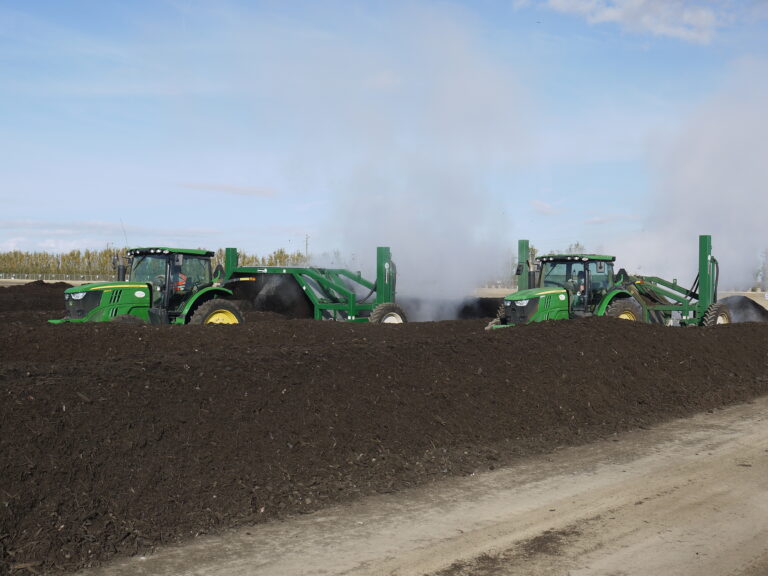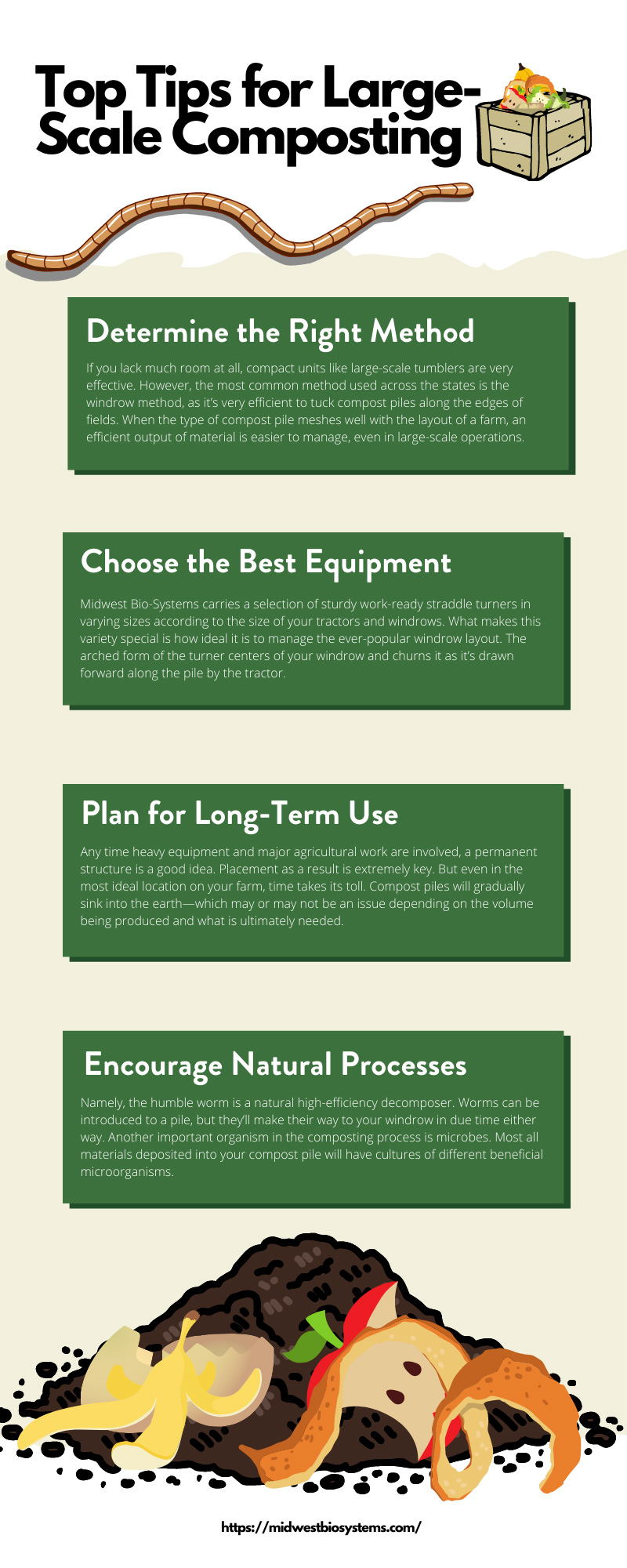
Top Tips for Large-Scale Composting
In the 1960s, a man named Sir Albert Howard wrote a book detailing his experiments with farming techniques he learned after twenty years of studying in India. The book was called An Agricultural Testament, and it made major waves throughout Britain and the states. Renewable farming was a fairly new concept at the time, but its beneficial impact on the environment has become clear. Since then, Western farmers have continued to push the knowledge and create increasingly profitable and sustainable rules and methods to produce the perfect compost.
What was once a secret lost to clay tablets as early as 2334 BCE is now a widespread and important method for growing healthy crops efficiently. Now farmers interested in adopting this amazing don’t have to look far for top tips for large-scale composting—including our own educational seminars!
Determine the Right Method
For such a truly ancient practice, it’s unsurprising that there are many effective methods for building compost piles. Styles of compost vary from staged areas, various layering techniques, covered or indoor piles, uncovered or outdoor, and so on. Furthermore, there are different tools such as tumblers and compost tea brewers. Many varieties, sizes, and models of compost turners also exist, and determining which one you need depends on the method of pile you prefer.
Ultimately, what’s best for your farm likely most immediately depends on what space is available. If you lack much room at all, compact units like large-scale tumblers are very effective. However, the most common method used across the states is the windrow method, as it’s very efficient to tuck compost piles along the edges of fields. When the type of compost pile meshes well with the layout of a farm, an efficient output of material is easier to manage, even in large-scale operations.
Choose the Best Equipment
In addition to layout formats, your choice of equipment will also vary significantly. When most people think of compost managing equipment, they likely picture a straddle-type turner pulled by a tractor. Midwest Bio-Systems carries a selection of sturdy work-ready straddle turners in varying sizes according to the size of your tractors and windrows. What makes this variety special is how ideal it is to manage the ever-popular windrow layout. The arched form of the turner centers of your windrow and churns it as it’s drawn forward along the pile by the tractor.
However, there are many types of turners, all of which are ideal for different layouts and locations on a farm. For farms with a little more room dedicated to composting, many compost turners shift piles around. For instance, elevating face turners are great for reshaping piles; the material is drawn up the vertical face and deposited on the other side. Auger-type turners typically shift rows back and forth across two parallel lines of space. Finally, trapezoid turners complete lift layers of windrows to form new piles.
Plan for Long-Term Use
Any time heavy equipment and major agricultural work are involved, a permanent structure is a good idea. Placement as a result is extremely key. But even in the most ideal location on your farm, time takes its toll. Compost piles will gradually sink into the earth—which may or may not be an issue depending on the volume being produced and what is ultimately needed. Besides this, tractors without question will sink into the ground too after a few years of dragging composting equipment up and down windrows. Creating a foundation ahead of time is a great idea if you are sure about the location you’ve chosen.
Additionally, neighbors may need some consideration depending on the proximity of the farm or windrow to residential land or trafficked roads. Turning compost kicks up some dust, and different stages of decomposition may have a noticeable odor, especially depending on the make-up of a pile. Consider adding a natural barrier to dissuade complaints. Trees create an attractive landscaping appeal, as well as dampen sounds, reduce crosswinds, and catch dust. Besides this, positioning windrow away from prying eyes and noses will save unnecessary grief in the long run.
Encourage Natural Processes
One of the best top tips for large-scale composting is really to let nature do its thing. One excellent way to do this is by encouraging nondestructive organisms to occupy your windrow. Namely, the humble worm is a natural high-efficiency decomposer. Worms can be introduced to a pile but, they’ll make their way to your windrow in due time either way. Another important organism in the composting process is microbes. Most all materials deposited into your compost pile will have cultures of different beneficial microorganisms. If you need specific nutrients included in the finished product, consider introducing specific microbe species via inoculation.
To ensure any lifeforms that take up residence in your pile continue to be successful, pay careful attention to the health of your windrows. The two most important factors for rapid turnaround are heat and moisture. Your pile should come in at around 135 degrees Fahrenheit.
The best way to keep it at this ideal temp is to maintain rows four to eight high, four to eight wide, and fourteen to sixteen feet long. Additionally, it’s important to dampen the pile as needed. Overly frequent aeration may dry out a pile more than oxygenate. Try to stick to a well-maintained routine of turning and watering to minimally disrupt the natural processes busy working for you.
Our Own Contribution To Composting History
Midwest Bio-Systems has been in the business of high production commercial composting for over twenty years. Our founder, Edwin Blosser, started his journey through the world of renewable farming back in 1984. With the creation of this company in 1993, he has been working hard to help fellow agricultural workers set out on their own journeys into green farming.
The culmination of tireless dedication has been the manufacturing of our Aeromaster line of straddle compost turners—the perfect companion for your large-scale compost project. Reach out to us today to learn more about our composting services and equipment, including our educational seminars made by and for farmers.

